Every year, dackets are trying to master new and new cultures to decorate their country sites. One of these plants is Sanzolina. It is a comprehensive, long-term culture. Her homeland is the countries of the Northern Mediterranean, where she got its spread almost across Europe. The plant is perfect for applying for decorative purposes, which predetermined its popularity among landscape designers. With this flower, you can how to dilute any flower, making it a bit elegant and create a designer composition, in the center of which will be Santolina. Due to the fact that it is equally growing well both in the open soil and in pots, it can be grown on the windowsill, decorating the interior of the apartment. Santolina flowers, in addition to decorative value, have quite practical. Dried inflorescences with shoots with their smell scare mole. Folding them into a small pouch, you can get a great remedy for protecting fur and wool pests. Read more Description of Santolina, as well as the method of cultivation - Consider further.
Santolina species
Like most flower plants, Santolina has a large number of diverse species. However, 5 of them are the most popular among florists:
- Santolina Cypress - a very popular type of plant. It is a magnificent, thick bush with interesting arcuate shoots. During the vegetation, it can reach a height of more than half a meter, forming a beautiful half-one. The colors of shoots are mainly green with a grayish or silver tint. And changes its appearance to cypressive Santolina in the process of growth. First, the shoots are brightly green, then seized with a gray velvet raid. Plant blooms for quite a long time, almost all summer - from June to the end of August. Flowers in cypressive Santolina are small yellow shades, differ in a pleasant aroma.
- Pilish Sanza. It is a flower shrub that can achieve quite large sizes (height and a diameter of more than half a meter). The plant is distinguished by small and narrow leaves whose width rarely exceeds 40 mm. Flowers cinema and white inflorescences. Their form resembles a basket.
- Greenish Santolina. Received its name thanks to the color of the leaves. They have a bright green color. The shape of the leaves is dissected, which gives the plant even more charm. The shoots are arcuate, in length reaching up to 50 cm. Santolina flowers are greenish, they do not differ in large size, have a predominantly cream shade.
- Neapolitan Santolina. This type of plant is the largest among its relatives. So, the height of the bush under certain conditions of care can reach up to 1 meter. This makes it one of the most popular plants for landscape designers. The leaves of the Neapolitan Santolina have a bright green color, and it blooms in small yellow inflorescences. As with most species of this plant, flowers have a specific and fairly pleasant aroma. Neapolitan Santolina, in addition to everything, has a number of dwarf varieties. Their height does not exceed 16 cm. Thanks to this, they grow perfectly in the premises. Dwarf varieties of Neapolitan Santolina: Pretty Carol and Weston.
- Elegant Sanzolina. This is a small plant that is equally growing well, both in the apartment and on the flower bed. Its feature is that it is very bad to carry the cold, so in winter it can not stay outdoors. With the onset of frosts dig it, transplanted into the pot and transfer it to the room.
Reproduction and growing Santolina
This blooming shrub is propagated in two ways:
- Seeds.
- Stalling.
The first method is more complicated and does not guarantee the expected result. However, for gardeners, whose did not have this plant before, it is the only one affordable. The reproduction of stalling is more procused, but it requires the presence of certain knowledge from gardener. With incorrect workpiece and cutting cutting, the result may be deplorable.
Seeds of plants for landing are collected from the maternal bush in mid-September. After that, they need to dry well and wrap in paper. After that, stored in a dark dry place to spring. If the seeds are bought in a flower shop, it is necessary to approach this process very carefully. Do not buy them from unverified sellers in dubious packaging, or without an indication of the final storage period. The result from such a sowing may not be at all as expected.
Sowing Santolin Seeds is carried out in early June, when the ground on the plot warms up. The most optimal soil temperature for seed landing is + 16⁰s. If sowing is carried out to obtain seedlings, they do it in the conditions of the greenhouse in early April. The first shoots after sowing appear on 21 days. Specific care for Santolina is not required, all events are carried out as with a conventional sediment.
The reproduction of cuttings is carried out in the following order:
- From the bottom third of the escape that should be worn, remove all the leaves. Then cut it off from the plant and cut the cuttings with a length of up to 150 mm. The operation on the workpiece of Cerenkov is carried out in late February - early March.
- When cuttings are cut, a place is preparing for their preliminary landing. To do this, the zone is poured a substrate, which consists of sand and leaf land.
- Dry cutlets in a slightly moistened substrate and covered with a film.
- After the appearance of the roots in Chenkov, they are planted in separate pots, in which they grow to the end of May, after which they produce landing of Santolines into open ground.
Santolina landing
Initially, it should be properly picking a place for planting the plant:
- In the clearing, where culture landing is planned, the sun's rays should be well penetrated. This shrub loves heat and light, so it grows poorly in shady areas.
- Please note that strong busting of winds and drafts should not be present on the plot. Therefore, in order to improve the survival rate of culture, it follows next to the meadow to build an elevation.
- It is not necessary to fertilize the soil on the site, because the plant grows well in poor soils. However, it is important that the Earth is well drained, since the moisture stagnation can lead to the boost of the shrub roots.
- Not badly, the culture "feels" on the stony areas. Therefore, Santolina is often used when creating garden-park compositions.
Next, you need to choose the right seedlings for planting. They must have a dense rhizome, without damage. In addition, the seedlings should not have brown spots and extraneous enclosures. Plant culture in the ground in April. If the seedlings are purchased earlier, then before their time, they must be landed at home or in a greenhouse.
The order of planting culture is as follows:
- The selected area is carefully and deeply screw. The soil must have a loose structure. If there is too heavy soil, then a small amount of sand should be added to it.
- Plant seedlings at a distance of 30-40 cm from each other. Previously, the seedlings are removed from the planting container and transferred to a predetermined well on the site. Make sure that during the transfer of a seedlings did not damage its roots.
- From above, the rhizome is sprinkled with earth, then the sapling is abundantly watered.
Caring for Santolina
Cultural care activities are as follows:
- It is necessary to periodically loose land on the site. So the root system of the plant will be able to "breathe", obtaining the necessary portion of oxygen.
- From the flower beds, where culture grows, we should regularly leave the weed herbs that can interfere with the growth of Santolina.
- Santolina loves moderate watering. Watering the plant should be regularly (1-2 times in 10 days). But at the same time it is impossible to allow stagnation of moisture, because it can adversely affect the rhizome of the shrub. If you find that the leaflets of the culture began to turn yellow and fall, then stop watering for 2 weeks.
- The plant relates to a number of thermo-loving crops that poorly carry the winter period. Therefore, before the onset of cold weather, Santolina should necessarily be inspired. As a layer of insulation, the lapper will be perfect. In the regions with a cold climate, it is better to build a frame and to strip it by observing material. In addition, the soil is covered with a layer of mulch. It is suitable for this, wood ash and sand.
- Fertilizers contribute to the root of the plant 1 time in 7-10 days from March to August. For this, mineral feeders are perfectly suitable, which contains nitrogen.
- After flowering, the shrub shoots curb to 1/3. In addition, the yellowed and damaged branches should be deleted in a timely manner.
- Plant transplant is carried out every 5 years.
Application of Santolina in Landscape Design
In landscape design use cold-resistant varieties of plants. The main advantage of Santolina Silver is the color of her shoots. A bush of plants with a truly shade perfectly shades the bright colors of other inhabitants of the flower beds. Thanks to this, designers are able to create an amazing flower bed.
The dumb varieties of Santolines are perfectly suitable for the device of a live border, and tall - alive hedges. Its bush perfectly gives up molding, however, it should be remembered that the cropped plant will not bloom. Thanks to this, the trimming of Santolines is often used to create compositions in the style of bonsai.
The bushes of the plant on the Alpine slides and open terraces are perfectly looking great, especially in combination with natural stone and small gravel.
The most successful neighbors for planting Santolines are:
- Chamomile.
- Sage.
- Mint.
- Lavender English.
- Kotovnik.

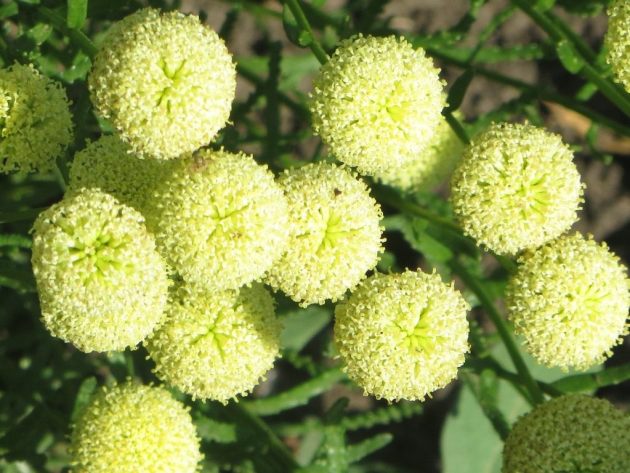
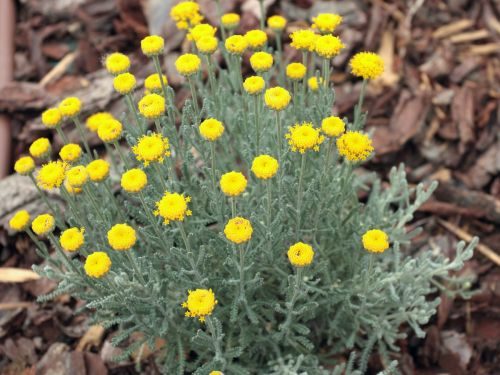
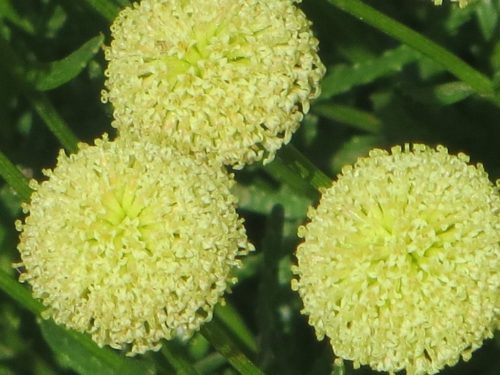
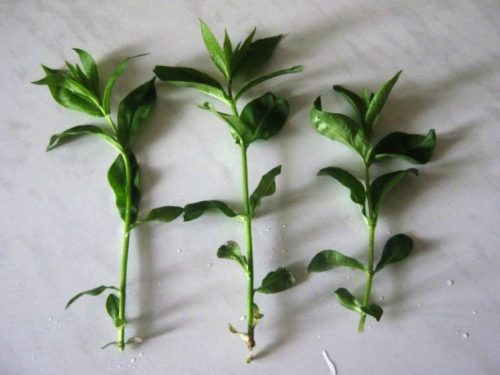
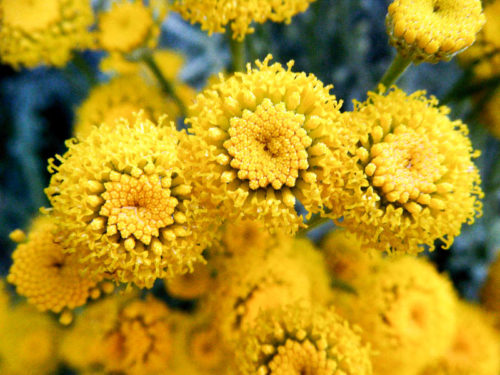
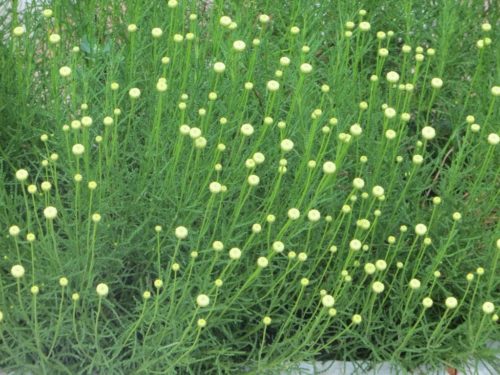
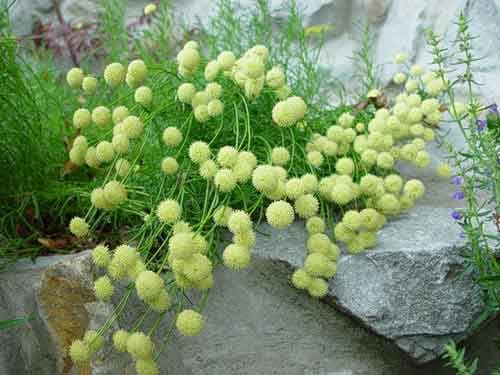
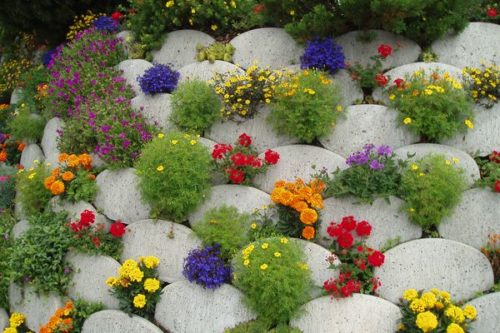

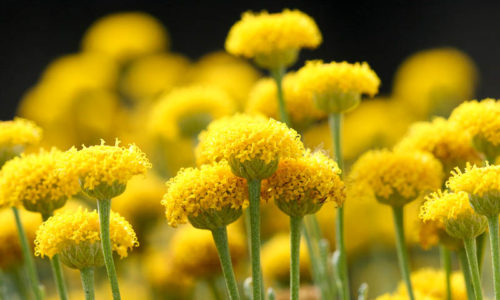
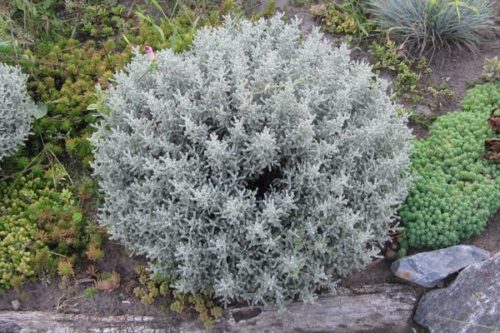
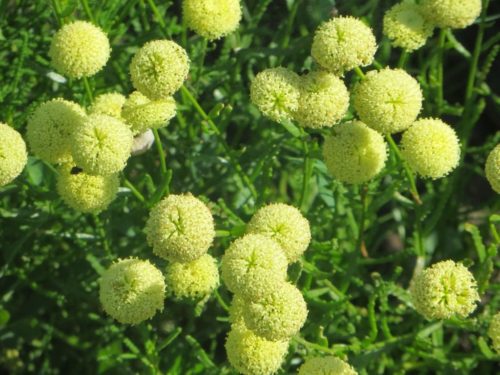
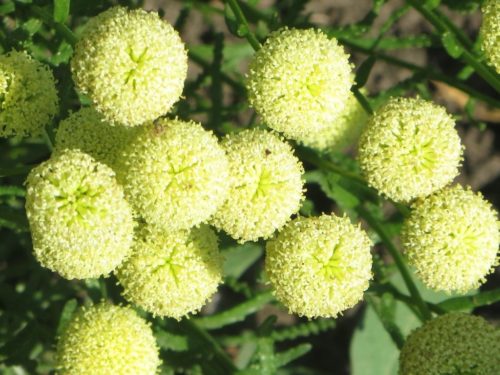












 Start a discussion ...
Start a discussion ...